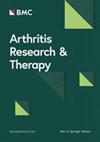Integrated analysis of dermatomyositis reveals heterogeneous immune infiltration and interstitial lung disease-associated endotype
IF 4.9
2区 医学
Q1 Medicine
引用次数: 0
Abstract
Dermatomyositis (DM) is an autoimmune disease with a high rate of disability and mortality especially in DM with concurrent interstitial lung disease (DM-ILD). Little is known about inflammatory signature and heterogeneous endotypes of DM. We aimed to illustrate the systemic inflammatory signature of DM and define an ILD-associated endotype. Olink proteomic analysis was performed on serum samples obtained from DM patients (n = 32), DM patients with ILD (n = 16), and healthy controls (n = 19). Transcriptomic data from skin samples was utilized to assess immune infiltration and investigate the correlation between protein and mRNA levels of biomarkers. Additionally, the prognostic value and clinical significance of identified biomarkers were validated through follow-up studies of DM patients and immunofluorescence analysis of skin tissues. Proteomic data revealed the inflammatory signature of DM, with GO and KEGG enrichment analyses identifying chemotaxis-related pathways. Transcriptomic analysis of skin samples indicated upregulated inflammatory responses and M1 macrophage infiltration in DM. Two chemokines, CXCL10 and CXCL11, were identified as highly associated with immune infiltration and DM progression. Our data suggest that serum CXCL10 and CXCL11 reflect the inflammatory burden of DM. The identified biomarkers hold promise for determining an ILD-associated endotype and predicting clinical outcomes, thereby paving the way for timely management of DM and prevention of complications. • Integrated analysis of serum proteomics and skin biopsy transcriptomics identified key analytes present in both protein and RNA transcripts that correlate with the degree of skin involvement in DM and the onset of ILD. • CXCL10 and CXCL11 were confirmed to reflect the local immune environment of the skin and hold the potential to assess ILD risk. • An ILD-associated endotype in DM was characterized by distinct inflammatory profiling and heterogeneous features, paving the way for early DM-ILD diagnoses and improved clinical management.求助全文
约1分钟内获得全文
求助全文
来源期刊

Arthritis Research & Therapy
RHEUMATOLOGY-
CiteScore
8.60
自引率
2.00%
发文量
261
审稿时长
14 weeks
期刊介绍:
Established in 1999, Arthritis Research and Therapy is an international, open access, peer-reviewed journal, publishing original articles in the area of musculoskeletal research and therapy as well as, reviews, commentaries and reports. A major focus of the journal is on the immunologic processes leading to inflammation, damage and repair as they relate to autoimmune rheumatic and musculoskeletal conditions, and which inform the translation of this knowledge into advances in clinical care. Original basic, translational and clinical research is considered for publication along with results of early and late phase therapeutic trials, especially as they pertain to the underpinning science that informs clinical observations in interventional studies.
 求助内容:
求助内容: 应助结果提醒方式:
应助结果提醒方式:


